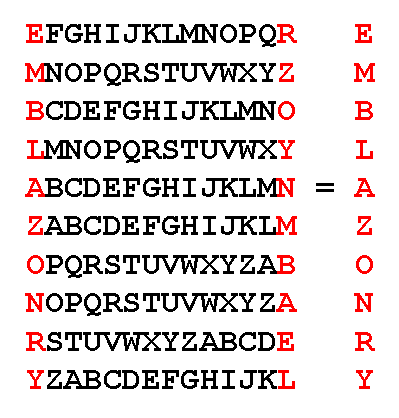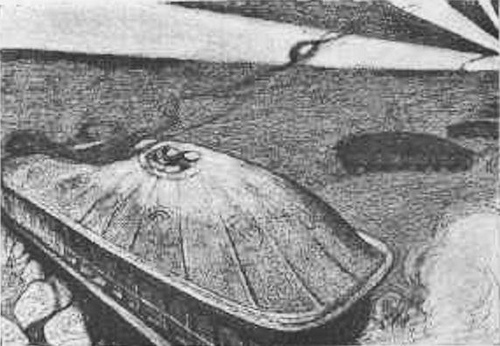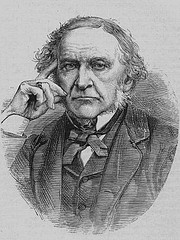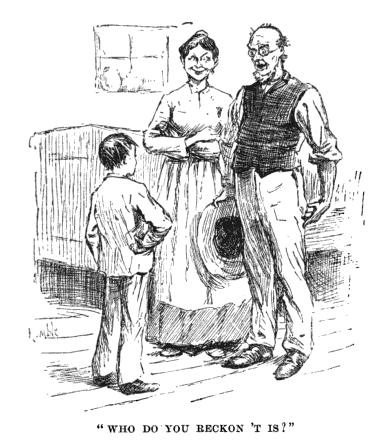artolater
n. a worshiper of bread
Author: Greg Ross
Around the World
Shift each letter in EMBLAZONRY forward 13 places in the alphabet and you get an anagram of EMBLAZONRY:

The Streetcar Singularity
‘If a man followed the directions of a street-car company,’ said Jones, ‘he would never enter one of its cars. Once in, paradoxically, he would never leave it. Just read that sign; it says, ‘Passengers are forbidden to enter or leave this car while in motion.’ Now, how in the name of Lindley Murray can a passenger do otherwise than get in motion, while leaving or entering a street car?’
— Marshall Brown, Bulls and Blunders, 1893
Forewarned

H.G. Wells’ 1903 story “The Land Ironclads” imagined a bold new war machine — a massive armored vehicle, “something between a big blockhouse and a giant’s dish-cover,” that ground remorselessly across the battlefield and gunned down enemy infantry:
They crawled level along the ground with one foot high upon a hillock and another deep in a depression, and they could hold themselves erect and steady sideways upon even a steep hillside. The engineers directed the engines under the command of the captain, who had look-out points at small ports all round the upper edge of the adjustable skirt of twelve-inch iron-plating which protected the whole affair, and who could also raise or depress a conning-tower set about the port-holes through the centre of the iron top cover. The riflemen each occupied a small cabin of peculiar construction, and these cabins were slung along the sides of and before and behind the great main framework, in a manner suggestive of the slinging of the seats of an Irish jaunting-car.
Thirteen years later, the first British tanks appeared at the Somme.
See The War Ahead.
Home Is the Sailor
A building curiously arranged to resemble the hull of a ship, the rooms of which were made to look like its cabins, used to be pointed out for many years in Wandsworth. Upon the top of it a small room, or rather turret, used to attract special attention, for it contained the corpse of its builder and former owner, an eccentric old sailor, whose will made it a condition of inheritance that his body should be buried on what he called ‘the deck’ of his ship-house. The house was pulled down by a railway company about 1860.
— The World of Wonders, 1883
A Bad Week
On Aug. 6, 1945, Mitsubishi engineer Tsutomu Yamaguchi was in Hiroshima visiting the company shipyard when the Enola Gay‘s atomic bomb exploded overhead.
Badly burned, he spent the night in an air raid shelter and then returned to his hometown.
He was explaining the ordeal to his supervisor there when “at that moment, outside the window, I saw another flash and the whole office, everything in it, was blown over.”
He lived in Nagasaki.
Slow Maltreated Wailing

William Gladstone was cursed with a well-balanced name, one that his political enemies found well suited to anagrams. The conservative-minded Lewis Carroll found that WILLIAM EWART GLADSTONE can be rearranged to spell both WILD AGITATOR! MEANS WELL and WILT TEAR DOWN ALL IMAGES?
The prime minister might have shrugged this off as a coincidence — “wild agitator” might mean anything, after all — but a more painstaking student found that RIGHT HONOURABLE WILLIAM EWART GLADSTONE spells I’M A WHIG WHO’LL BE A TRAITOR TO ENGLAND’S RULE.
Which is rather too specific to disown.
Air Balls
In the summer of 1938, a BOAC flying boat had just passed Toulouse, France, en route to Iraq when a ball of lightning entered the open cockpit window, singed the captain’s eyebrows and hair, made holes in his safety belt and dispatch case, and passed through the airplane to the rear cabin, where it exploded loudly.
In 1960, a KC-97 Air Force tanker was headed for Elko, Nev., at 18,000 feet when, the pilot reports, “a ball of yellow-white color approximately 18″ in diameter emerged through the windshield center panels and passed at a rate about that of a fast run between my left seat and the co-pilot’s right seat, down the cabin passageway past the Navigator and Engineer. … After approximately 3 seconds of amazingly quiet reaction by the 4 crew members in the flight compartment, the Boom operator sitting in the rear of the aircraft called on the interphone in an excited voice describing a ball of fire that came rolling through the aft cargo compartment abeam the wings, then danced out over the right wing and rolling off into the night and clouds!”
On March 19, 1963, British scientist R.C. Jennison was flying from New York to Washington, D.C., on a late-night flight on Eastern Airlines. “The aircraft encountered an electrical storm during which it was enveloped in a sudden bright and loud electrical discharge. Some seconds after this a glowing sphere a little more than 20 cm in diameter emerged from the pilot’s cabin and passed down the aisle of the aircraft approximately 50 cm from me, maintaining the same height and course for the whole distance over which it could be observed.”
Math Notes

Uncle Silas’ Secret

Huckleberry Finn was already in press in 1884 when publisher Charles L. Webster received an alarmed letter from an advance salesman: A mischievous engraver had altered the illustration above to give it a rather darker character (NSFW).
It certainly puts a new spin on the caption.
Despite a reward of $500, the prankster was never identified. Webster had to call back all published copies of the novel, cut out the plate, and tip in a new one, delaying publication past the Christmas season. But it’s fortunate they caught it when they did — it could have ruined Mark Twain’s career.
